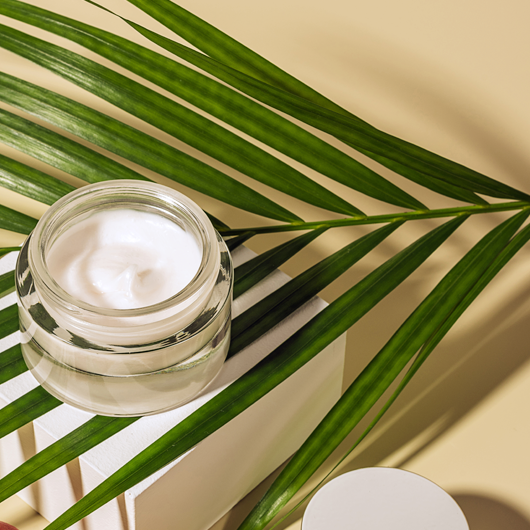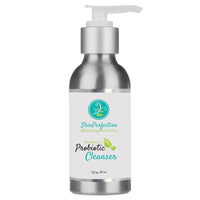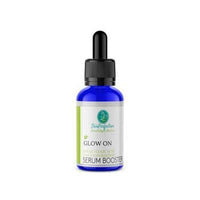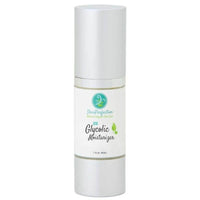Alpha Hydroxy Acid
Clean and Clear With Alpha Hydroxy Acid

Common Names: AHA, Glycolic, Malic, Tartaric, Lactic
A skin-smoothing fruit exfoliator is found in many types of skincare treatment products. Alpha Hydroxy is a general term for fruit acids. These can be in the form of malic, tartaric, lactic acid, or glycolic acid. Furthermore, these natural sources exfoliate the outer layer of the skin.
These acids help deep clean and clear up clogged pores making them look smaller and more refined. Consistently using Alpha Hydroxy Acids once a week can help brighten dull skin, reduce pore size, and keep your skin looking youthful. You can also use them daily as part of a consistent anti-aging skincare routine.
Products such as cleansers, serums, or peels may contain these acids. Combine Alpha Hydroxy Acids for a more intense treatment.
Types of Acids
Glycolic Acid
Glycolic Acid naturally comes from sugarcane. It is one of the most well-known dull complexion removers that people use. Glycolic Acid comes as a liquid in a peel and can also be an anti-aging ingredient in products such as a cleanser. In addition, it is a widely used skin renewing daily treatment.
Malic Acid
Malic Acid comes from apples and has become very popular in cosmetics. In fact, you can see it popping up in everything from lotions to shower gels.
Tartaric Acid
Tartaric Acid is from grapes. Usually, when discussing grapes and skincare, we automatically think of Resveratrol. But grapes have other powerful, compelling qualities besides being a powerful natural antioxidant.
Lactic Acid
Milk and dairy products contain Lactic Acid. Yogurt and milk in regenerative masks and body washes throughout the centuries prove to be useful today. It is a mild but effective treatment that stimulates fibroblasts. Further, fibroblasts tell collagen that more is needed.
AHAs VS BHAs
AHAs (Alpha Hydroxy Acids) and BHAs (Beta Hydroxy Acids) are both types of chemical exfoliants used in skin care products to promote skin renewal and improve skin texture. While they share some similarities, they also have distinct characteristics and benefits. Here are the benefits of AHAs over BHAs:
- Surface Exfoliation: AHAs are water-soluble acids that primarily work on the surface of the skin. They help to loosen dead skin cells, encouraging their sloughing off and revealing fresher, smoother skin underneath. This makes AHAs particularly effective for addressing issues like uneven skin tone, fine lines, and surface-level texture concerns.
- Skin Brightening: AHAs, such as glycolic acid and lactic acid, are known for their ability to improve skin radiance and brightness. By removing the outer layer of dull, dead skin cells, they can give the complexion a more luminous and youthful appearance.
- Hyperpigmentation: AHAs can be beneficial for addressing certain types of hyperpigmentation, such as sunspots and post-inflammatory hyperpigmentation (PIH). Their exfoliating action can help fade these dark spots over time by promoting the turnover of damaged skin cells.
- Dry Skin: AHAs can be gentler on dry or sensitive skin compared to BHAs. They help improve hydration by removing the top layer of dead skin cells and help skincare products to penetrate effectively.
- Fine Lines and Wrinkles: AHAs can have a smooth and diminish the appearance of fine lines and wrinkles by encouraging cell turnover and collagen production in the skin's upper layers.
However, it's important to note that AHAs increase sun sensitivity. It's crucial to use proper sun protection while using products containing AHAs.
While AHAs offer these benefits, BHAs also have their own advantages:
- Oil Control: BHAs, specifically salicylic acid, are oil-soluble and can penetrate into the pores. This makes them excellent for individuals with oily or acne-prone skin, as they can help clear out excess sebum and prevent clogged pores, leading to fewer breakouts.
- Anti-Inflammatory: BHAs have anti-inflammatory properties that can help calm redness and inflammation associated with acne and other skin conditions.
- Deeper Exfoliation: BHAs penetrate deeper into the pores, making them effective for addressing issues that originate from within the skin, such as whiteheads and blackheads.
In summary, AHAs are generally favored for addressing surface-level concerns like texture, uneven tone, and brightening, while BHAs are often preferred for oily or acne-prone skin due to their ability to penetrate pores and reduce breakouts. The choice between AHAs and BHAs depends on your skin type, concerns, and the specific results you're looking to achieve.
The Hottest New Acid that is Not an AHA or BHA
Succinic acid, a multifunctional compound derived from natural sources, has garnered attention for its promising role in skincare products. This dicarboxylic acid, with its molecular structure featuring two carboxylic acid groups, offers a range of benefits for skin health and appearance.
In skincare, succinic acid is celebrated for its potential to promote a balanced complexion. Its gentle exfoliating properties assist in sloughing away dead skin cells, unveiling fresher and more radiant skin. By encouraging the shedding of dull outer layers, succinic acid can help improve skin texture and minimize the appearance of uneven tone.
Moreover, succinic acid's anti-inflammatory attributes make it an asset for those with sensitive or blemish-prone skin. It can assist in calming redness and soothing irritations, contributing to a calmer and more harmonious skin tone.
Benefits of Succinic Acid for Oily Skin
One of the noteworthy qualities of succinic acid is its ability to aid in oil control. For individuals with oily skin, succinic acid can help regulate sebum production, which is responsible for excess oiliness. This, in turn, may lead to a reduction in the appearance of pores and a more matte complexion.
Additionally, succinic acid is recognized for its potential to support the skin's natural barrier function. By bolstering the skin's defenses against external stressors, it contributes to a healthier and more resilient complexion.
As an ingredient derived from nature, succinic acid aligns with the growing trend of seeking effective skincare solutions rooted in botanical and naturally occurring compounds. Its multifaceted benefits, including exfoliation, soothing, oil regulation, and barrier support, make it a versatile addition to skincare formulations.
When considering succinic acid-infused skincare products, it's important to note that individual responses may vary. As with any skincare ingredient, a patch test and consultation with a dermatologist can help determine its suitability for specific skin types and concerns. With its diverse range of potential advantages, succinic acid stands as a valuable asset in the realm of modern skincare formulations.
Sources:
https://en.wikipedia.org/wiki/Alpha_hydroxy_acid
https://cosmeticsinfo.org/alpha-hydroxy-acids
https://www.ncbi.nlm.nih.gov/pmc/articles/PMC4277239/
About the Author
Written by Kari Thomas





